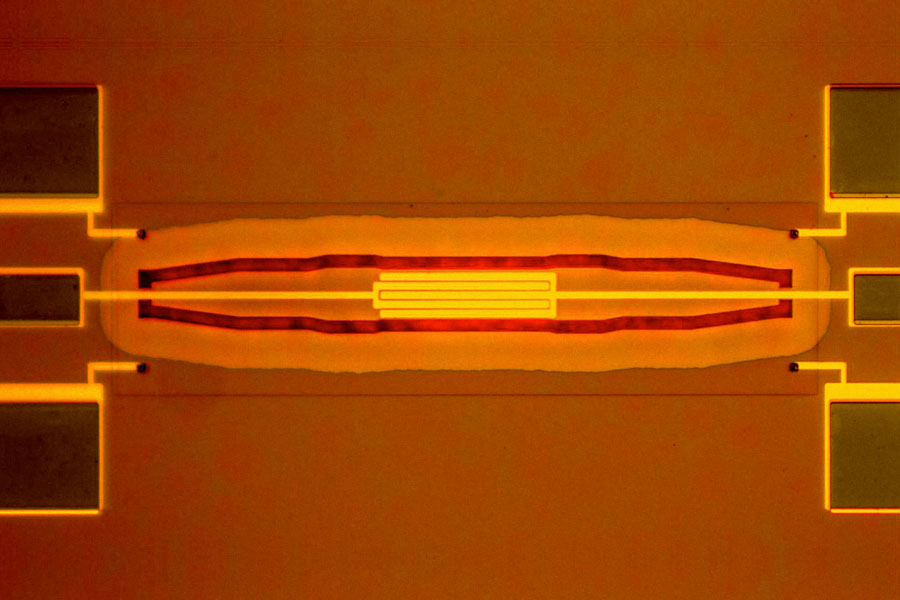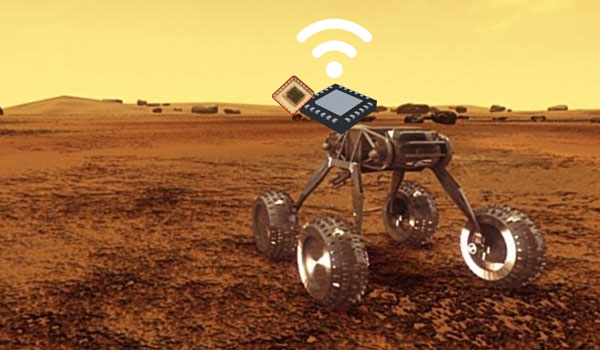Above:
Heart of the Clock: Optical image of an InAlN/GaN resonator that is the heart of an ultra-stable clock working at 500°C (operational and stable at the surface of Venus).
GaN Clock
Very Hot Clocks
Mina Rais-Zadeh – Valerie Scott – Cliff Frez – University of Florida – Stanford University
Missions to hot planets, such as Venus or Mercury, have traditionally been extremely short in duration and have had a very narrow scope mainly due to the unavailability of sensors and readout electronics that can survive the extreme environments of those planets. To address this problem, we are working to develop several sensor technologies that can survive at extreme temperatures and in high-radiation environments. These new sensors use piezoelectric materials, formed by combining elements from group III with those of group V of the periodic table, called III-V compounds, for example, gallium nitride. These compounds are chemically inert and can be used not only for making high-temperature-tolerant sensors, but also for building electronics that can work at temperatures up to 1,000 degrees Celsius. The high-temperature clock technology uses a stack of III-V materials but its properties are engineered to achieve near-zero shift in frequency with a change in temperature.
Currently, MDL, in collaboration with Stanford University and University of Florida, is developing clocks that are stable at temperatures up to 500 degrees Celsius in indium aluminum nitride/Gallium nitride (InAlN/GaN) material stacks. InAlN/GaN high-mobility transistors have been shown to work at temperatures as high as 1,000 degrees Celsius. This work, supported by a NASA HOTTech Award, is aimed at demonstrating high-temperature-tolerant clock technologies using the same stack for the first time to enable data transfer at high temperatures. Since the data collected from any probe, lander, explorer, or sensor in a harsh environment needs to be transferred to the main spacecraft in a robust fashion, realizing a local clock with a stable frequency output is the most crucial part of such a communication system.
An artist’s impression of a rover that could survive the intense heat of Venus, communicating via a robust radio transmitter chip enabled by the proposed stable clock. It is sending collected scientific data that could revolutionize our understanding of the planet.
+ Larger image



